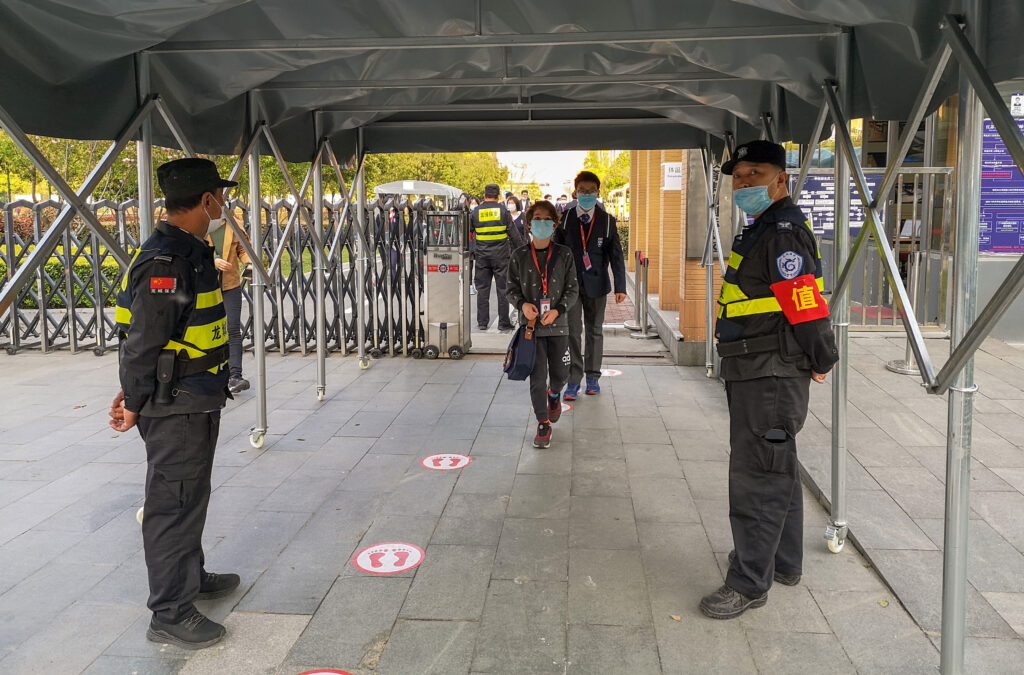Students leave Changwai Bilingual School in Changzhou on Apr. 13, 2020. [Credit: Theresa Boersma]
(CHANGZHOU, China) – While parents and teachers in the U.S. wrestle with another semester of online learning or dive into hybrid schooling experiments, China’s schools have smoothly reopened thanks to tracking systems that require daily location and temperature checks. School administrators and teachers have widely supported these precautions.
“The whole school—if the child or staff member is sick with fever, he or she is recommended not to come to school and stay at home until the fever is completely gone. Better to get the proof note from the doctor,” said Tina Huang, a teacher at Nanwai King’s College School in Wuxi.
Schools vary in how strictly they enforce these notes. “The school notice to parents has stated that it is forbidden to go to class with illness,” said Zhang Li, a third-grade parent at Longcheng Primary School in Changzhou. “As long as the students have a fever, parents must report to the teacher, and kids have to rest at home. When you are cured, you will need to provide a hospital note of health. My daughter had a fever once in May. After three days of recovery, she went to the hospital for an examination.”
But China’s sweeping school safety measures will face untested challenges as flu season approaches. Flu and COVID-19 can both result in fevers and coughs, which get flagged in school reporting systems designed to catch COVID-19 symptoms. As a result, students with mild flu cases could crowd the country’s hospitals, taxing resources needed for more severe illnesses.
When students arrive on campus each morning, they must pass through a temperature check. Those found to be feverish are isolated from others and sent home—or in the case of dormitories, quarantined—until the fever is gone.
Many schools go a step further and bar students without a doctor’s note or health certificate from returning to class. This requirement could cause a significant influx in the number of people seeking health exams at hospitals.
The number of reported flu cases in China can fluctuate dramatically, but an epidemic in the first five months of 2019 saw 1.77 million cases reported, more than the total of the previous four years.
According to health experts, the best way to avoid overwhelming the hospitals when flu season hits is to encourage people to get flu shots. Some parents are already ahead of the curve.
“But every year, I take my kid to get a flu shot,” said Gao Yun, mother of a student at Changzhou’s Puqian Zhongxin Primary School, “and I’ve been doing it for eight years.”
Since the peak of mainland China’s epidemic on Feb. 17 which saw 58,016 active COVID-19 cases—the most globally—numbers have plunged to 165 active cases on Sept. 17, according to China’s National Health Commission.
In that time, China’s schools have welcomed students back to in-person classes twice without the surges in COVID-19 witnessed in other countries. Now, it is hoping to maintain that winning streak without sacrificing its citizens to other diseases.


